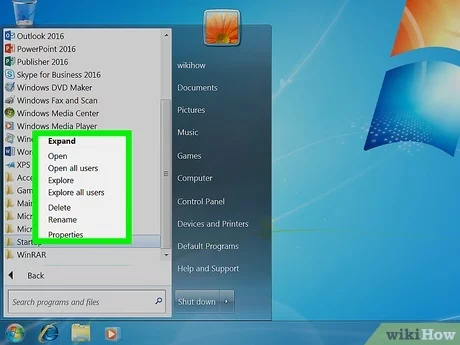Navigating Startup: A Comprehensive Guide to Managing Startup Programs in Windows 7

In the realm of computer performance, startup programs play a significant role. They dictate which applications and processes launch automatically when you boot up your Windows 7 system. Managing these startup programs is crucial for optimizing system performance, reducing boot time, and ensuring that your computer operates efficiently. Windows 7 provides users with built-in tools and utilities to manage startup programs effectively, allowing them to control which programs launch at startup and streamline their computing experience. In this comprehensive guide, we will delve deep into the intricacies of managing startup programs in Windows 7, providing step-by-step instructions, advanced techniques, and practical insights to help you navigate startup and optimize system performance.
Understanding Startup Programs:
Before delving into the process of managing startup programs, let’s first grasp the concept and significance of these programs:
- Definition: Startup programs are applications and processes that automatically launch when you boot up your Windows 7 system. They may include essential system services, utility programs, or third-party applications.
- Impact on Boot Time: The number and nature of startup programs can significantly impact the boot time of your computer. Excessive startup programs can prolong the boot process and slow down system performance.
- Optimization Potential: Managing startup programs allows users to optimize system performance, reduce boot time, and ensure that essential programs launch efficiently upon startup.
Accessing Startup Programs in Windows 7:
Now, let’s explore how to access and navigate startup programs in Windows 7:
- Accessing System Configuration:
- Click on the Start button in the taskbar and type “msconfig” in the search box.
- Press Enter to open the System Configuration utility.
- Navigating Startup Tab:
- In the System Configuration utility, navigate to the “Startup” tab to view a list of startup programs and their respective status.
Managing Startup Programs:
Now that we’ve accessed startup programs, let’s explore how to manage them effectively in Windows 7:
- Enabling or Disabling Startup Programs:
- To enable or disable a startup program, check or uncheck the box next to its name in the list.
- Disable unnecessary startup programs to reduce boot time and optimize system performance.
- Sorting and Organizing Programs:
- Sort startup programs alphabetically or by status to easily identify and manage them.
- Organize programs based on their importance and relevance to your computing needs.
- Researching Programs:
- Research unfamiliar startup programs to determine their purpose and necessity.
- Use online resources or built-in Windows tools to gather information about startup programs and their impact on system performance.
- Applying Changes:
- Once you’ve made changes to startup programs, click on the “Apply” button to apply the changes.
- You may be prompted to restart your computer for the changes to take effect.
Advanced Features and Tips:
To further enhance your experience with managing startup programs in Windows 7, consider the following advanced features and tips:
- Using Task Manager:
- In addition to System Configuration, Task Manager provides another method for managing startup programs in Windows 7.
- Open Task Manager by right-clicking on the taskbar and selecting “Task Manager” from the context menu. Navigate to the “Startup” tab to view and manage startup programs.
- Monitoring System Resources:
- Monitor system resources and performance metrics to identify resource-intensive startup programs.
- Use tools such as Task Manager or third-party system monitoring utilities to track CPU, memory, and disk usage associated with startup programs.
- Regular Maintenance:
- Regularly review and update startup programs to ensure optimal system performance.
- Periodically revisit the list of startup programs to remove unnecessary or outdated entries and add new programs as needed.
- Backup and Restore:
- Before making significant changes to startup programs, consider creating a backup or restore point to revert to in case of unforeseen issues.
- Windows 7 provides built-in tools for creating system restore points to safeguard against unintended changes to system configuration.
Conclusion:
Managing startup programs in Windows 7 is essential for optimizing system performance, reducing boot time, and ensuring a smooth computing experience. By following the comprehensive guide outlined above, users can effectively navigate startup programs, identify unnecessary entries, and streamline their system configuration to enhance efficiency and performance. Whether you’re a casual user seeking to improve system responsiveness or a power user optimizing performance for specific tasks, mastering the art of managing startup programs empowers you to take control of your computing experience with confidence and precision. So embrace the power of optimization, master the intricacies of managing startup programs in Windows 7, and navigate startup with clarity and efficiency.




